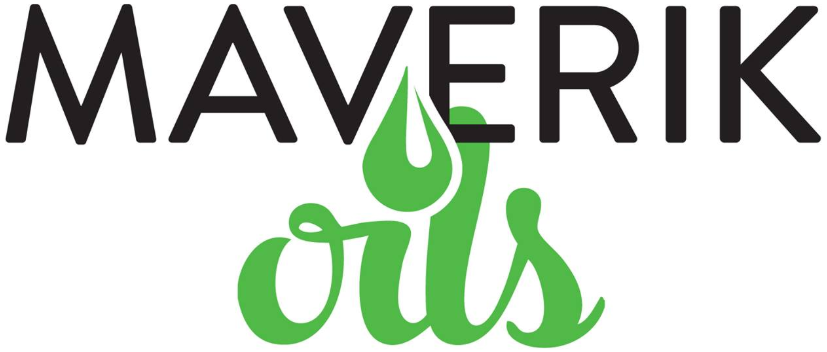Palm Oil | Understanding its Origin, Composition, Benefits, and Uses
Produced from the fruit of the African Elaeis Guineensis tree, palm oil is an extremely versatile edible oil that offers a plethora of health benefits. Semi-solid at room temperature, palm oil is colorless and odorless, meaning that it doesn’t alter the smell, texture, or taste of food products. Palm oil is widely used in African and Asian countries not only for cooking but also to produce detergents, food products, personal care products, animal feed, pharmaceuticals, and biofuel. Palm oil is currently the most popular and affordable vegetable oil worldwide. Keep reading to learn about the palm oil extraction process, palm oil composition, palm oil benefits, and palm oil uses.
Origin and Extraction of Palm Oil
Originating in West Africa, the production of palm oil dates back 5000 years. It is known to be one of the most popular traded commodities in the world. Even though the palm oil that we consume is cultivated in Malaysia and Indonesia, it is extracted from Elaels Guineensis, which are trees that are usually found in coastal countries in Southwest and West Africa, including Nigeria, Sierra Leone, Liberia, Gabon, and Angola.
There are primarily two types of palm oil; red unrefined palm oil is used in cooking and neutral-colored refined palm oil used for frying food products in large quantities and food manufacturing. Here is an overview of how palm oil is produced:
1. Harvesting and Sterilization
When an oil palm tree turns 3 to 4 years old, they start growing palm fruit. Larger than the size of olives, these fruit bunches are harvested every year and transported to the processing plant. One palm fruit contains approximately 30% – 35% of palm oil.
On reaching the factory, the palm fruits are subjected to sterilization using high-pressure steam to kill the enzymes and prevent the oil from deteriorating.
2. Fruit Threshing and Digestion
Fruit threshing is a process that is used to strip the palm fruits from bunches. Once every palm fruit is separated, mechanical digesters are used to crush the kernels or seeds to release the palm oil.
3. Extraction of Palm Oil
The crushed fruit pulp is further processed to extract palm oil. This process requires the use of modern machinery like centrifuges and hydraulic presses.
4. Separation of Water and Oil
The extracted palm oil contains impurities and a large amount of water. Therefore, in order to separate the oil from solids and water, it is passed through a series of centrifuges or settling tanks. This cleans the palm oil and allows the water and impurities to settle at the bottom.
5. Palm Oil Purification
Finally, degumming is performed to refine the oil further. The by-product then undergoes neutralization and deodorization to eliminate the remaining contaminants and remove unwanted color and odor. The palm oil is packaged and stored under controlled conditions to maintain quality.

Palm Oil Composition and Nutritional Value
Did you know all foods can fit a healthy lifestyle if consumed moderately? A healthy lifestyle and diet depend on three elements; sufficient physical activity, balanced energy intake, and variation in meals and foods. Eating healthily requires you to eat lots of vegetables, fruits, protein-rich foods, and balanced carbohydrates.
Neutral in smell and taste, palm oil provides you with all the essential nutrients needed to stay healthy and fit. The table below shows the nutritional value of 14 grams (1 tablespoon) of palm oil:
| Calories | 120 |
| Fats | 14 grams |
| Saturated Fats | 7 grams |
| Polyunsaturated Fats | 1 gram |
| Monounsaturated Fats | 5 grams |
| Vitamin E | 2.16 milligrams (14% of Daily Value) |
Note that all the calories in palm oil come from fats. According to a report by FoodData Central, the fatty acid breakdown in palm oil is 10% polyunsaturated fatty acids, 40% monounsaturated fatty acids, and 50% saturated fatty acids.
Palm oil is also an excellent source of Vitamin E, especially tocotrienols and tocopherols. The antioxidant properties of these compounds help maintain optimal cell functioning and protect against oxidative stress.
Giving palm oil a reddish-orange color, carotenoids provide your body with Vitamin A. Carotenoids found in palm oil include lycopene, alpha-carotene, and beta-carotene. Palm fruit oil also contains coenzyme Q10, a powerful antioxidant that plays an integral role in energy production and cellular health.
Summing it all up, palm oil is an excellent source of minerals, essential fatty acids, and vitamins. It gives you an energy boost and provides your body with all the nutrients needed for metabolism. It is important to remember that the palm oil composition can vary depending on the type of palm oil, growing conditions, and the extraction process. However, the fatty acid profile (high content of saturated fats) remains constant in all cases.
Palm Oil Benefits
Obtained from the pulp of Palm fruit, for more than 5000 years, palm oil has been used by people worldwide to cook food and manufacture wax, skincare items, cosmetics, and much more. Packed with lycopene and beta-carotene, palm oil has a reddish-orange color. With a carotene level 300 times greater than in tomatoes and 15 times more than in carrots, palm oil is known to be a healthier vegetable oil on the market. Listed below are seven health benefits of including palm oil in one’s diet:
1. Prevents Heart Disease
Even though you might find mixed research, palm oil has been credited with reducing LDL cholesterol levels and increasing HDL cholesterol levels, minimizing the risk of cardiovascular diseases like heart stroke, coronary heart disease, and accumulation of cholesterol.
According to several studies, palm-rich diets help reduce bad cholesterol (LDL) levels in people compared to those who consume high lauric acids or trans fat diets. Another clinical trial was conducted in 2016, where people were given 2 tablespoons (25 ml) of hybrid palm oil (a combined version of oils from Elaels olelfera trees and Elaels guineensis) every day. The final result suggested that daily intake of palm oil can provide the same health benefits as olive oil, making palm oil the tropical equivalent of the golden liquid.
2. Improves Vision
Rich in Vitamin A (especially beta-carotene), palm oil can improve vision. When consumed, your body converts the beta-carotene into Vitamin A, which helps in enhancing visual acuity and reduces the risk of vision-related issues.

3. Reduces the Risk of Cancer
Essential fatty acids in palm oil strengthen the immune system, making it capable enough to stop or slow down the cancer metastasis process.
However, know that palm oil should be of premium quality and not be processed at high temperatures as it can increase the risk of cancer. Therefore, eating or cooking with palm oil for the sole purpose of its anti-cancerous properties isn’t recommended.
4. Boosts Hair Growth
Another lesser-known health benefit of palm oil is that it can increase hair growth. Palm oil acts as a collagen booster, meaning it can promote hair growth and make them healthier and stronger. Furthermore, applying palm oil regularly can effectively decelerate greying of hair.
5. Softens Skin
Palm oil contains re-fattening agents that help in the replenishment of the skin’s moisture and natural oils. Daily application of palm oil can provide you with deeply hydrated, supple, and soft skin. Due to its anti-aging and moisturizing properties, palm oil is widely used to make lotions and creams.
6. Supports Brain Health
Found in palm oil, tocotrienols are a Vitamin E component with strong antioxidant properties and protect the brain from free radicals. Several human and animal studies have suggested that palm oil can help slow the progression of dementia, protect the polyunsaturated fats inside your brain, prevent the growth of lesions in the brain, and lower the risk of stroke.
To prove the theory, a two-year trial was conducted in 2014 in which 121 patients with brain lesions were divided into two groups. While group 1 was given tocotrienols derived from palm oil twice daily, group 2 received a placebo. The results showed growth of the brain lesion in group 2, whereas the participants of group 1 remained stable.
7. Promotes a Safer and Healthier Pregnancy
Palm oil provides a pregnant woman with all the essential minerals and vitamins that it needs to ensure the healthy growth of the fetus. According to nutritionists, taking palm oil every day during pregnancy can prevent vitamin deficiency and promote optimum growth of the baby.
Palm Oil Uses
The inexpensive, versatile, and practical nature of palm oil makes it the best choice for companies. You will be surprised to know that more than 50% of the packaged products in a supermarket contain palm oil or palmate oil derivatives, as The Wall Street Journal reported. In fact, there are a multitude of palm oil derivatives that don’t even include the word “palm.” Without further ado, let’s discuss palm oil uses in the industry.
1. Food Industry
Due to its neutral flavour, long shelf life, and high heat stability, palm oil is used to make a wide range of food products, including snacks, baked goods, confectionery, spreads, frying oils, and margarine. Bakers and manufacturers use palm oil to increase the fluffiness and volume of baked goods. Chefs also use palm oil to replace cocoa butter and milk fat in dairy foods, marking it the ideal cooking oil for vegan and keto dieters.
2. Personal Care Products
Palm oil and its derivatives are extensively used to manufacture personal care products, including lipsticks, creams, lotions, shampoos, soaps, and cosmetics. Palm oil’s moisturizing properties and ability to produce a smooth texture in products make it the top choice for cosmetic companies.
3. Household Products
Palm oil is the main component of household products such as cleaning agents, laundry soaps, detergents, and candles. Palm oil is used to create lather and foam and provides stability and texture to cleaning products.
4. Pharmaceuticals
Hundreds of over-the-counter medications, vitamins, and supplements contain palm oil. The derivatives of palm oil, like Polyethylene Glycol, Magnesium Stearate, Polysorbate 80, Palmitate, Glycerin, and Propylene Glycol, are used to formulate tablets, capsules, gel caps, tropical creams, and liquid medications. Palm oil also serves as a carrier for active ingredients, stabilizers, and emulsifiers.

5. Industrial Applications
Due to its high oxidative stability and viscosity properties, palm oil is utilized in industrial processes, including grease production and lubricating machinery. Palm oil is also used as a raw material for the production of oleochemicals.
However, it is worth noting that the production and consumption of palm oil have raised concerns regarding deforestation, environmental stability, and habitat loss. Formed in 2004, the Roundtable on Sustainable Palm Oil (RSPO) has set production standards to mitigate these issues. According to the RSPO, over 7 million plantation workers are employed in the palm oil production industry. Thus, stopping production can have serious repercussions on the economy. As a palm oil manufacturer, it is your responsibility to follow the guidelines set by the RSPO.
The Unique Characteristics of Palm Oil
Palm palm is a versatile vegetable oil with numerous distinctive characteristics that contribute to its widespread uses. Some notable qualities of palm oil are as follows:
- Tasteless
- Odorless
- Inexpensive
- Low melting point
- Longer shelf life
- Remains semi-solid or solid at room temperature
- No trans fats
- It can keep the foot crunchy and crispy
- Non-GMO
- Good oxidative stability
- Brain-healthy
- Heart-healthy
Takeaways
From the pizza, chocolates, and donuts that you love to munch on, to the shampoo, deodorants, lipstick, and toothpaste that you use, you will find palm oil is in almost everything. Extracted from palm fruit’s mesocarp, palm fruit oil is a neutral taste and smell vegetable oil rich in essential fatty acids, vitamins, and minerals. Daily palm oil consumption can improve brain functioning, heart health, vitamin absorption, vision, and hair growth. One tablespoon of palm oil comprises 120 calories. Thus, portion control is vital to ensure you don’t gain weight and live a healthy lifestyle.
Whether you want pure palm oil, MCT palm-based oil, palm shortening oil, refined palm oil, or vegetable glycerine, Maverik Oils has got them all. As a renowned, family-operated business, Maverik Oils takes pride in supplying top-quality oils to its consumers. For more information, contact us or visit our website right away!


